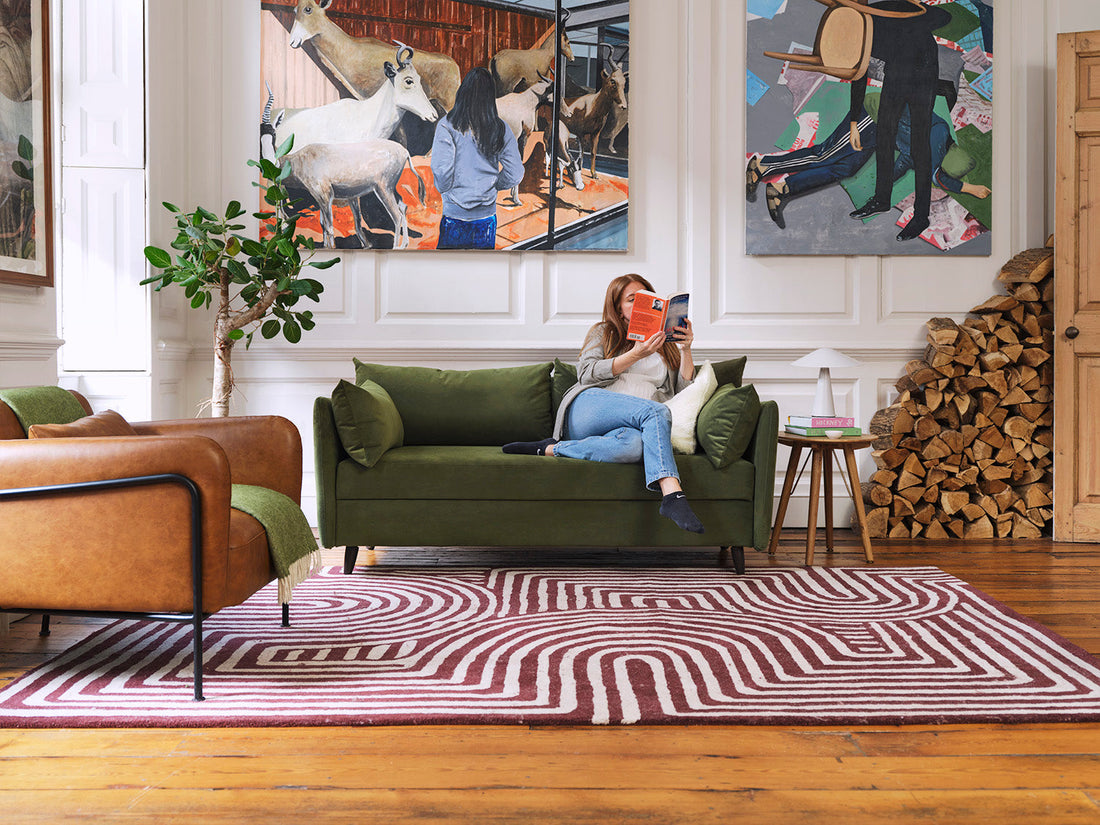5 Questions to Ask Yourself When Choosing the Best Sofa Shape for Your Space

A sofa is the heart of your living room. From stretching out by yourself and curling up with a good book to watching the latest episode of your favourite TV series with friends and family, your sofa is a go-to spot for the ultimate chilled weekend alone or when guests come over.
The shape of your sofa can significantly impact the flow of your space, as well as its overall feel and functionality. Deciding which sofa shape works best for your space depends on the room's layout and your lifestyle.
In this blog, we’ll cover five questions to ask yourself to determine the best sofa shape for your home.
1. What is the layout of your room?
Check the dimensions and shape of your living room, and think about the natural flow of the space. How easy will it be to walk around the sofa or place a coffee table or side table nearby for easy access to drinks and snacks, without the room feeling too crowded or cluttered? Measure and note the location of doors, windows, and other furniture so you can choose a new sofa that feels like a natural part of the space.
A different type of sofa can work better in a small living room compared to a large, open-concept living area. Modular U-shaped and corner sofas are particularly effective at creating defined zones, such as separate living and dining areas, within a spacious room, like an open-plan kitchen lounge. If you have an expansive room, a big sofa will help it look balanced, rather than having a small, straight sofa pushed up against a wall with a lot of dead space in front.
Compact or more enclosed rooms often suit traditional two- to four-seaters, loveseats, or chaise sofas, which offer comfort without overwhelming the space. These styles can be combined with an armchair to create a social set-up, great for catching up over nibbles. If you want maximum sofa space in a small room, a U-shaped or corner sofa can still work to create an inclusive seating area that brings people together. Modular sofas allow you to adjust their width and length so you can choose the exact size that fits your space.

2. How many people do you need to seat?
Think about how many people you need to seat on a daily basis. It can be tempting to go for the largest sofa that fits, but this may not be the best use of your space. If you live by yourself, a loveseat or chaise longue may be all you need. This will give you enough space to get comfy while keeping the room feeling airy and open, and it can be the ideal reading nook.
For two housemates or a couple, a chaise or a two-seater sofa paired with an occasional chair is a good solution that provides room to relax and accommodate a friend or family member.
For larger households, or if you enjoy stretching out fully without fighting for space, a corner sofa or U-shaped sofa might be a more suitable option. These offer plenty of seating, and a modular style can be configured to suit your needs, giving you the flexibility to open up your floor space or create a layout that encourages conversation.

3. Do you regularly host guests?
If your home is often filled with extra family and friends, a sofa that accommodates a group is a must-have. A U-shaped sofa ticks all the boxes, with its wraparound design making it easy for everyone to chat face-to-face. Corner sofas are another great option for regular hosting, as they offer ample seating while taking up less space.
If you love to invite people over but have a smaller space, a medium-sized straight sofa can work well with one or two armchairs or occasional chairs, which can be rearranged as needed.
If your guests are reluctant to leave at the end of the night or plan to stay for the weekend, a sofa bed or chair bed is the perfect multi-functional sleeping solution, offering both style and practicality.

4. Is your household style more movie marathon, or cosying up with a book?
How you tend to use your living room will help you pick which sofa shape works best for the space.
If your living area moonlights as a home cinema, you'll want a sofa shape that allows everyone to face the TV comfortably. For small groups, a straight sofa paired with an ottoman gives everyone a clear view and somewhere to put their feet up. For larger groups, corner sofas also work well, offering clear sightlines without the awkward neck turns.
Love a game night? A U-shaped sofa around a central coffee table allows everyone to reach the middle, offering a more laid-back alternative to sitting around a dining table.
For a quieter living room where you spend time reading, scrolling on your phone with a cup of tea, or having an inevitable afternoon nap, a chaise sofa or loveseat can be ideal. These give you a cosy spot to relax in peace and utmost comfort.

5. Will it work with your existing furniture?
Just as a compact sofa can look unbalanced in a large room, a couch that’s too big might overpower your space or make it difficult to access and use other pieces of furniture.
Check the heights and proportions of your TV unit, nearby sideboards and tables, existing armchairs, and any shelves. Make sure there’s enough space to move around freely and that your new sofa won’t block pathways or cupboard doors.

While there’s no one-size-fits-all answer to choosing the best sofa shape, consider your room layout, the number of people you need to seat, and what you primarily use the space for.
Whichever shape you choose, get inspired and select the right sofa for your living room here.





